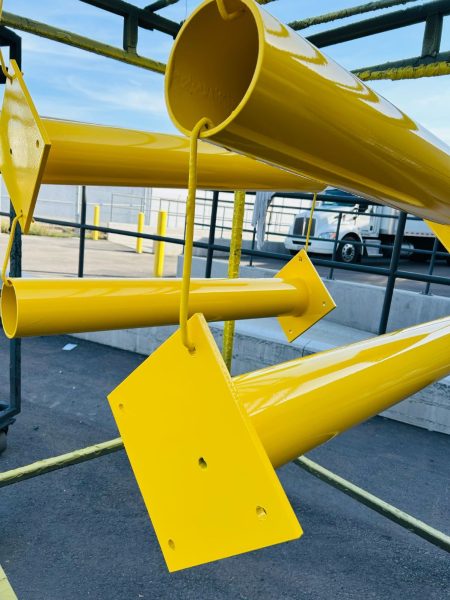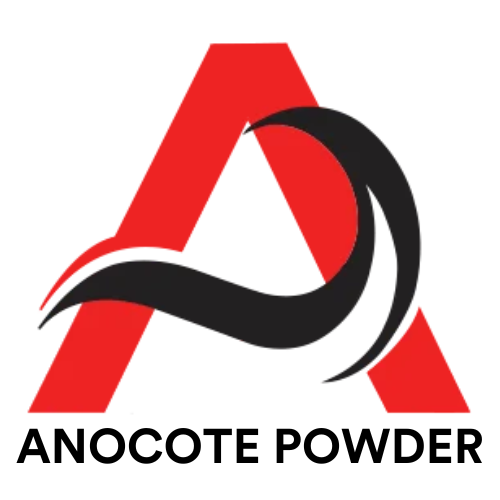
In the world of surface finishing, the debate between powder coating and traditional liquid paint continues to captivate professionals and consumers alike. As industries evolve and technology advances, understanding the distinct advantages of each method becomes crucial for making informed decisions about protecting and enhancing your valuable items. At Anocote Powder in San Diego, we’ve seen firsthand how powder coating transforms ordinary surfaces into extraordinary finished products. Let’s explore the key differences between these two popular finishing methods and why one might be superior for your specific needs.
What Is Powder Coating?
Powder coating represents a modern approach to surface finishing that has revolutionized many industries. Unlike liquid paint, powder coating consists of finely ground particles of pigment and resin that are electrostatically applied to a surface. The application process begins with the powder receiving an electric charge while the object being coated is grounded. This creates an electrostatic attraction that allows the powder to adhere evenly to the surface.
After application, the coated object enters a curing oven where the powder melts, flows, and chemically reacts to form a “skin.” This process, known as cross-linking, creates a finish significantly more durable than conventional paint. The result is a uniform, attractive coating that bonds exceptionally well to the substrate.
The Durability Factor: Powder Coating vs. Paint
Superior Impact Resistance
When comparing powder coating to traditional paint, durability stands out as one of the most significant differentiators. Powder coated surfaces demonstrate remarkable resistance to impacts, scratches, and abrasions that would easily damage painted surfaces. This exceptional durability stems from the chemical composition and application method of powder coating.
The thermoset polymers used in powder coating create a finish that’s typically twice as thick as liquid paint. This additional thickness doesn’t just look substantial—it provides genuine protection against the bumps and scrapes of everyday use. For items that face frequent handling or environmental challenges, this enhanced durability translates to longer-lasting beauty and functionality.
Weather and Chemical Resistance
Powder coating excels in resisting environmental factors that quickly deteriorate standard paint. The molecular structure of properly cured powder coating creates a barrier that effectively resists:
- UV radiation that causes fading and deterioration
- Moisture that leads to corrosion
- Chemicals that can stain or damage surfaces
- Temperature fluctuations that cause expansion and contraction
This superior resistance makes powder coating particularly valuable for outdoor applications, where products must withstand years of environmental exposure without compromising appearance or structural integrity.
Aesthetic Advantages of Powder Coating
The visual appeal of finished products plays a crucial role in consumer satisfaction and perceived value. Powder coating offers several aesthetic advantages over traditional paint that make it the preferred choice for applications where appearance matters.
The application process of powder coating naturally creates a more uniform finish without the drips, runs, or brush marks common with liquid paint. The electrostatically charged particles distribute evenly across surfaces, reaching into recessed areas and covering edges more consistently than spray or brush-applied paint.
Furthermore, powder coating offers an impressive array of finishes beyond what’s easily achievable with conventional paint. From high-gloss showroom finishes to textured matte surfaces, powder coating provides options to match any design vision. Special effects like metallic finishes, hammertones, and wrinkle textures open creative possibilities that would require complex, multi-step processes with liquid paint.
Environmental and Health Considerations
Traditional liquid paints typically contain volatile organic compounds (VOCs) that evaporate during application and curing. These compounds contribute to air pollution and can pose health risks to those exposed during application. In contrast, powder coating contains no solvents and releases negligible VOCs into the atmosphere.
The powder coating process also generates less waste than traditional painting. Overspray powder can be collected and reused, significantly reducing material waste compared to liquid paint. Additionally, powder coating eliminates the need for thinners and solvents used in cleanup, reducing hazardous waste disposal requirements.
Cost Analysis: Initial Investment vs. Long-Term Value
Upfront Costs
When evaluating powder coating against traditional paint from a financial perspective, it’s important to consider both immediate and long-term costs. Initially, powder coating typically requires a higher investment than conventional painting. The specialized equipment needed for powder application and curing represents a significant capital expense that contributes to the higher initial price point.
The materials themselves also tend to cost more per unit than liquid paint. However, this comparison doesn’t tell the complete story of cost-effectiveness between these two finishing methods.
Long-Term Economics
The true economic advantage of powder coating emerges when considering the entire lifecycle of the finished product. Several factors contribute to powder coating’s superior long-term value:
- Reduced maintenance costs due to greater durability
- Longer service life before refinishing becomes necessary
- Less frequent replacement of damaged items
- Higher material efficiency with less waste during application
- Lower energy costs in facilities with optimized recovery systems
For businesses and consumers making finishing decisions, these long-term savings often outweigh the higher initial investment, making powder coating the more economical choice over time.
Application Process Comparison
The application processes for powder coating and liquid paint differ significantly, with each offering distinct advantages depending on the specific requirements of a project.
Traditional painting typically follows a sequence of surface preparation, primer application, multiple coats of paint with drying time between each, and finally a clear protective topcoat for many applications. This multi-step process can be time-consuming, with significant waiting periods between stages as each layer dries.
Powder coating streamlines this process considerably. After proper surface preparation, powder is applied in a single application and cured once in an oven. This one-step approach dramatically reduces total finishing time, allowing for higher production efficiency in manufacturing environments. At Anocote Powder, our state-of-the-art facilities can process items quickly while maintaining exceptional quality standards.
Industries Benefiting Most from Powder Coating
Automotive Applications
The automotive industry has embraced powder coating for numerous components due to its exceptional durability and resistance properties. From chassis parts to wheels, powder coating provides protection against road debris, salt, chemicals, and extreme weather conditions that vehicles regularly encounter.
The superior chip resistance of powder coating keeps automotive parts looking newer longer, even under harsh conditions. Additionally, the wide range of available finishes allows for customization options that appeal to consumers looking for unique aesthetic touches for their vehicles.
Household Items and Appliances
Many household items benefit from the durability and appearance advantages of powder coating:
- Appliances like refrigerators, washers, and dryers
- Outdoor furniture exposed to weather elements
- Bathroom fixtures that face constant moisture
- Kitchen hardware subjected to cleaning chemicals
- HVAC components that operate in varying conditions
The clean, uniform finish of powder coating enhances the appearance of these items while providing the durability needed for daily use in demanding environments.
Making the Right Choice for Your Project
Selecting between powder coating and traditional paint requires careful consideration of your specific requirements. While powder coating offers clear advantages in many scenarios, certain applications may still benefit from liquid paint’s characteristics.
Consider powder coating for items that:
- Will face frequent handling or physical contact
- Need to withstand outdoor exposure
- Require a uniform finish on complex shapes
- Must maintain appearance over many years
- Have high-visibility in commercial or retail settings
At Anocote Powder in San Diego, we specialize in helping clients determine the optimal finishing solution for their unique requirements. Our expertise ensures your valuable items receive the protection and aesthetic enhancement they deserve. Contact our team today for a consultation and discover why our customers throughout Southern California trust us for all their powder coating needs.
